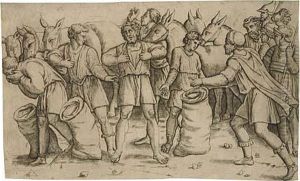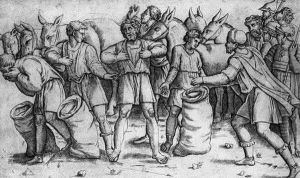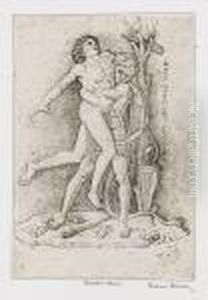Giovanni Antonio Da Brescia Paintings
Giovanni Antonio da Brescia was an Italian engraver and printmaker, active during the Renaissance period. His exact birth date remains unknown, but his significant contributions to the art of engraving positioned him as a prominent figure in the early 16th century. He is often associated with the Northern Italian city of Brescia, from which his name derives, indicating either his birthplace or the primary location of his professional activity.
Giovanni Antonio was deeply influenced by the works of Andrea Mantegna, an Italian painter who was a leading proponent of the Renaissance style. Mantegna's influence is evident in Giovanni Antonio's engravings, which often mirrored the meticulous detail and classical themes found in Mantegna's work. Despite this influence, Giovanni Antonio developed his distinct style, characterized by precise line work and a keen eye for detail, which allowed him to capture the texture and depth of his subjects with remarkable clarity.
Throughout his career, Giovanni Antonio da Brescia produced a wide range of engravings, including religious subjects, classical themes, and scenes from everyday life. His works were not only appreciated for their artistic merit but also for their role in disseminating the Renaissance style across Italy and beyond. Engravings could be produced in multiples, making Giovanni Antonio's works more accessible to a wider audience than unique paintings or sculptures.
One of his most notable contributions to the art world was his involvement in the development of the chiaroscuro woodcut technique in Italy. This method, which involves using multiple wood blocks to create prints with a range of tones, enabled artists to achieve a greater depth and realism in their prints. Giovanni Antonio's experiments with this technique contributed to its refinement and popularity among Italian artists of the time.
Giovanni Antonio da Brescia's death is believed to have occurred around 1520, but his legacy lived on through his influential works. His engravings continued to be admired and studied by artists and collectors, contributing to the enduring appreciation of the Renaissance's artistic achievements. Today, Giovanni Antonio is remembered as a master engraver whose work exemplifies the skill, creativity, and innovation of the Renaissance period.










